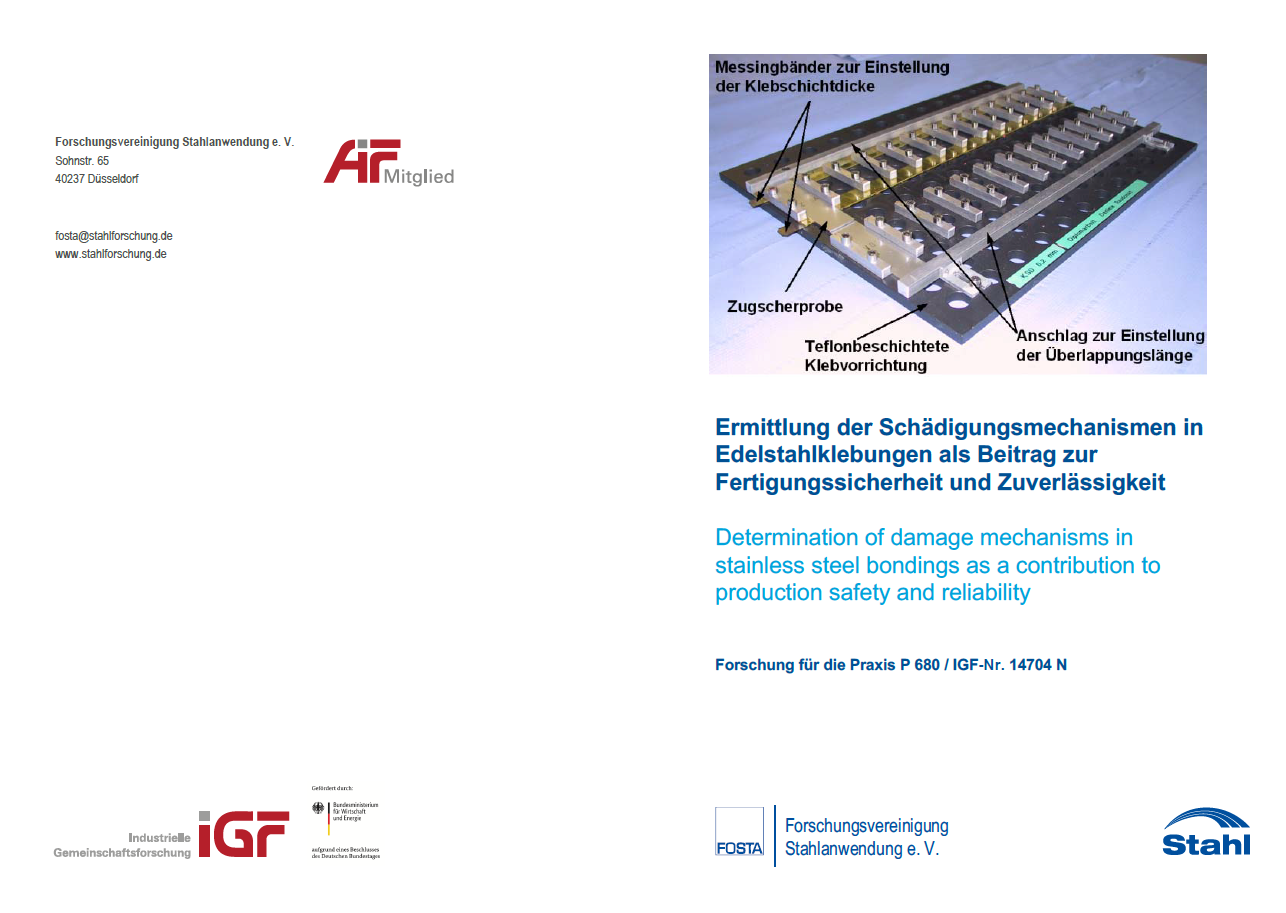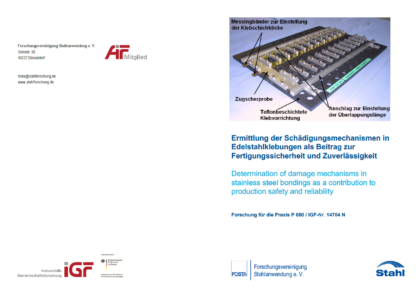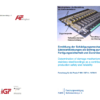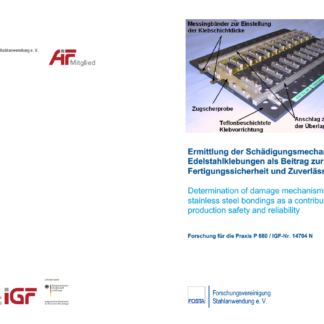Description
P 680 – Determination of damage mechanisms in stainless steel bondings as a contribution to production safety and reliability
The aim of the project was to determine the damage mechanisms in stainless steel adhesives as a contribution to production safety and reliability. It thus directly follows on from the topic of the previous project “Bondability of stainless steel in automotive engineering”. The focus was on the investigation of the ageing resistance of bonds made of stainless steels with hot-curing epoxy resin adhesives (dicyandiamide as hardener) and on the differentiation of influencing variables on the ageing progress.
For the investigation of the stochastically occurring, local adhesive failure of stainless steel adhesives, a new experimental scheme developed. In case of locally occurring changes in the adhesive strength of individual tensile shear test specimens, it enables the substrates to be assigned to the exact removal position (board number and position on the board). In the case of a deviating mechanical behaviour of individual test specimens, the surrounding areas can thus be made accessible to specific surface-analytical measurements to clarify the cause.
Within the scope of this project, however, the stochastically occurring delamination of individual samples observed in previous investigations (e.g. P 553) was not reproduced. Only one sample (i.e. 1 ‰ of the total sample quantity) showed a macroscopically adhesive fracture pattern, whereby the residual strength was still at 80 % of the sample mean. The fracture surface analysis here showed a disturbed cross-linking in the boundary layer between substrate and adhesive. Against this background, it is assumed that the process reliability in the adhesive-technical joining of materials made of stainless steels is given if the cross-linking conditions are optimal.
Independent of the epoxy adhesive system investigated, two different damage mechanisms could be identified. On the one hand, physical and chemical-structural changes of the adhesive polymer are observed under warm and humid ageing conditions. On the other hand, ageing conditions under moderate temperature and moisture exposure in the presence of chloride ions lead to adhesive-stimulated corrosion of the substrate at the polymer-metal interface.
Published in:
August 2020
Authors:
Prof. Dr.-Ing. P. L. Geiß, Dipl.-Ing. D. Vogt, Prof. Dr. rer. nat. W. Possart, Dr. rer. nat. P. Fehling, Dr.-Ing. O. Deutscher, Dr.-Ing. H. Schäfer, Dr. rer. nat. T. Fladung




